When Epcot or Disney California Adventure Park guests go to the “Turtle Talk with Crush” attraction, it seems as if the CG Pixar dude from Finding Nemo is talking to people right there in the theater.
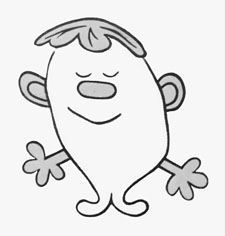 Turns out the basic idea of animated characters appearing to interact in real time has been around since 1960, albeit done in a much more humble way. Instead of high-definition imaging, and multi-million-dollar digital audio and video capabilities, this technique used rods, glue, a few lengths of polyurethane, and local TV station-level chroma-key facilities. Either way, it still took people, as Walt Disney said, to make it happen. Take away the tech and it still comes down to humans communicating creatively with each other through the art of animation.
Turns out the basic idea of animated characters appearing to interact in real time has been around since 1960, albeit done in a much more humble way. Instead of high-definition imaging, and multi-million-dollar digital audio and video capabilities, this technique used rods, glue, a few lengths of polyurethane, and local TV station-level chroma-key facilities. Either way, it still took people, as Walt Disney said, to make it happen. Take away the tech and it still comes down to humans communicating creatively with each other through the art of animation.
“Aniforms” was a patented live (or live-on-tape) television animation technique invented by Morey Bunin, brother of Lou Bunin (director of the stop-motion Alice in Wonderland feature starring Carol Marsh). Both were puppeteers in New York TV, theater, and parades. (Read more about the Bunin brothers here).
Morey Bunin enjoyed several years of success on CBS children’s television, competing with The Howdy Doody Show on NBC with The Adventures of Lucky Puppy, featuring a magician puppet named The Great Foodini, who recorded a couple of 78 rpm records and developed a following.
In 1963, Bunin described Aniforms in the patent application (click below to enlarge) and subsequent publicity as an alternative to cartoons that were produced with filmed drawings or stop-motion. Aniforms used the television graphic capabilities of the day to transmit a two-dimensional figure, similar to the way that titles were superimposed from a credit roll or art cards.

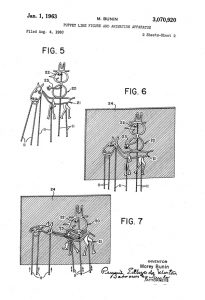
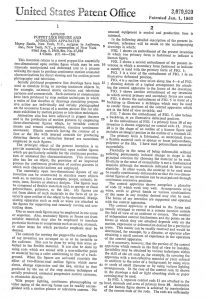
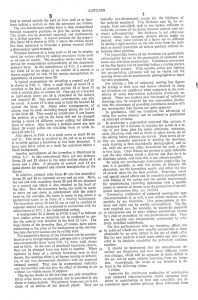

The figures were made of a pliable polyurethane foam material allowing them to bounce and twist. They were placed in front of a background of a designated color to disappear on camera like the green-screen process works today. Small rods and wires, positioned far enough away from the figures so they would fade out of focus, manipulated the figures. The resulting “cartoon characters” looked like typically limited animation images of early TV.
Aniforms could not move around very much, but the novelty was still a delight for short appearances. The biggest initial success was “Fred,” voiced by master puppeteer Cosmo Allegretti for CBS’ Captain Kangaroo. (Allegretti was also responsible for Bunny Rabbit, Grandfather Clock, Mister Moose, Dancing Bear, and the human character of Dennis. He was married to Carol Lawrence, Broadway’s original Maria in West Side Story.)
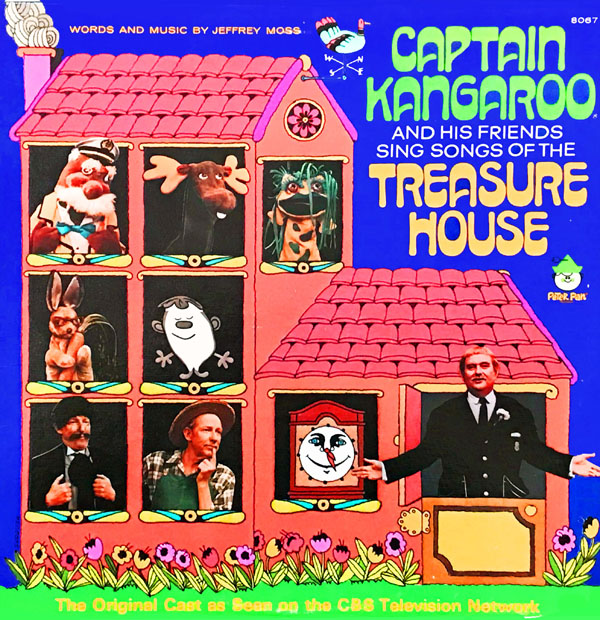
Kids knew the drill when the Captain adjusted the magical Treasure House TV set for Channel One. Fred would appear, he was funny and blobby, and somehow he could speak directly to the Captain. Other cartoons—even Tom Terrific and Manfred the Wonder Dog, could not, though they were able to move around a little more than Fred.
Fred’s success led to New York’s WPIX Channel 11 building a local TV show around Bunin’s “living cartoons.” The Surprise Show was hosted by actor/cartoonist Hank Stohl with Aniforms operated by Cleavon Little (Blazing Saddles); Wayland Flowers (Wayland and Madame) and actor/impressionist Jimmy Boyd (no relation to the singer of “I Saw Mommy Kissing Santa Claus”).
According to Kevin Butler’s fascinating article on tvparty.com, Boyd did the voices for all the Aniforms characters, whom Butler lists as “‘Dangerous Dwain’ (a bragging Cowpoke), ‘The Inspector’ (a con man), a lion (who was very gentle and only occasional roared), ‘Lorelei J. Loverly’ (a Chicken who never got Mr. Stohl’s name right), ‘Peaches La Creame’ (a hip, partying old lady), and ‘Bullwinkle J. Moose’, believe it or not!” Even though Aniforms were less expensive than traditional animation, it was still too costly for a local show, so the technology was eventually replaced by conventional puppets.
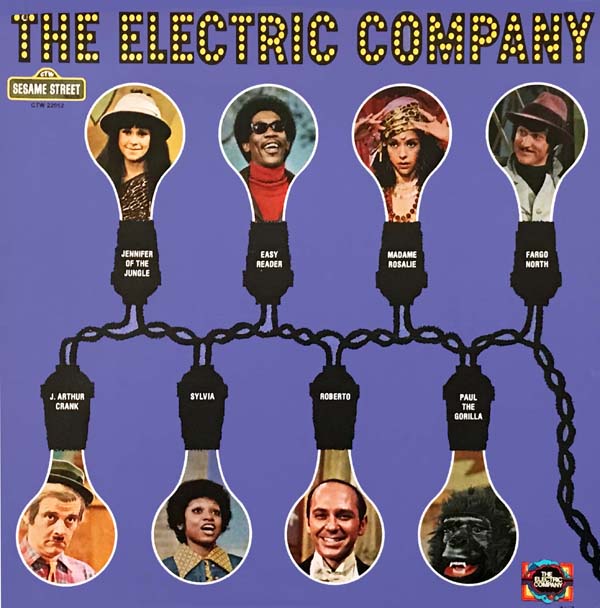
Those who remember The Electric Company may have guessed that Lorelei the chicken was the only Surprise Show character who hit “the big time” on The Electric Company, the highly entertaining PBS educational series from The Children’s Television Workshop, now Sesame Workshop. Along with Lorelei came Jimmy Boyd, again doing the Carol Channing-like voice (the name comes from Lorelei Lee, the character Channing played in the Broadway show, Gentlemen Prefer Blondes). A song was written for Lorelei that made its way to the Grammy-winning Electric Company Cast Album on Warner Bros. Records. It’s called “My Street.”
In the 1970s Bunin appeared along with two “impostors” as the creator of “live cartoons” on the long-running panel show To Tell the Truth. A smart-mouthed Brookynese Aniforms character (presumably played by Boyd in his “J. Arthur Crank” persona) took over the hosting duties and told each panelist when they could ask questions. When he got to Peggy “Crass” there was a big laugh at his rib at Peggy Cass, who feigned petulance and said, “Hey! I thought you were so cute before but now I’m not so sure!”
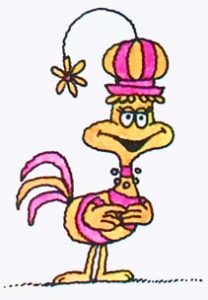
Lorelei the Chicken
The Electric Company reissue LP on Sesame Street Records edited thirteen minutes of material related to characters and cast members that were no longer in current or new segments of the series as of 1974 (though they still might have appeared in rerun segments). Luis Avalos and Hattie Winston could only be pictured on the 1974 cover because they had not joined the show until the second season. (Another original cast member who need not be mentioned was also not included on the 1974 album.)
Aniforms was certainly not the only animation on The Electric Company. A wonderfully thirties-style retro cartoon was fashioned to accompany “Silent ‘E.” It was written and sung by one of the numerous brilliant creative minds behind The Electric Company, Harvard mathematics professor and satirical musical performer Tom Lehrer. The song was run endlessly on the show but was always welcome. It was recorded in stereo for the record album and this YouTube video matched that version to the animated film (which was originally in mono):
The record contains several tracks relating to the exquisite hand-drawn animation on the series, a lot of which was explored by Mike Kazaleh in this Cartoon Research post . Legends of animation contributed to the series like John Hubley and Chuck Jones, as well as up-and-coming studios.
In this clip from the show, the“D” song is danced and sung by Rita Moreno (whose “EGOT” Grammy was earned with this cast album) and The Short Circus — Melanie Henderson, June Angela and Irene Cara. On the album, it was bookended with commentary by Mel Brooks as the little man (animated by Cliff Roberts) who would also frequently appear in Electric Company segments.
One of the most famous phonics teaching segments was “borrowed” years later for TV ad campaigns and Family Guy, in which two people in silhouette speak the first and last half of a word to a little melody by Joe Raposo. This music never made it to records but should have.
There was not very much Electric Company merchandise, except for an excellent magazine, a series of books, and a few games and toys. Like Sesame Street and Muppets materials, the quality was always very high. The magazine and the first record album gathered some of the finest artists for individual pages and spreads, just to make it interesting and stimulating for kids, rather than have one or two artists do the whole thing. Artists like Jack Kubert, Joe Orlando and Jack Davis were only a few.
One of the most inventive items was called “Naomi’s Magical Match-Up Machine.” Naomi was the unseen person mentioned at the end (“And… what about Naomi?”) of the wonderfully quirky soap opera spoof, Love of Chair. In reality, it was the show’s researcher Naomi Foner (mother of Jake and Maggie Gyllenhaal).
Two of the books were produced as read-alongs by Peter Pan Records: Fargo North, Decoder, and His Coat and Hat, and Silent ‘E’s’ from Outer Space.
Narrated by Morgan Freeman and featuring Jimmy Boyd as Paul the Gorilla and Judy Graubart as Jennifer of the Jungle, the story and record do not include the Lehrer song but build the lyrics (which was also the phonics lesson) into a complete epic adventure in which the “e’s” change the same words in the story as they did in the song.
The Electric Company was a launching pad for many careers in the entertainment industry, it gave several fine animation studios work (including Chuck Jones), and it even brought Spider-Man to TV for the first time in live-action, introducing him to millions of kids which in no small way helped push him (and Marvel) forward in the competition. The catchy theme was released as a single.
As for Aniforms, they bobbed up again here and there, including on an unsold game show pilot hosted by Alex Trebek called Malcolm and on a TV special called Bill Daily’s Hocus Pocus Gang, starring either Major Healey from I Dream of Jeannie or Howard Borden from The Bob Newhart Show, whichever one chooses. Of course, the concept of a live cartoon seems quaint now… except when Pixar does it.
“What’ll I Be Today?” – Fred from Channel One
Fred recorded one musical appearance on a 1968 Peter Pan LP called Songs of the Treasure House. It featured original music and lyrics by a young Jeffrey Moss, a year before the premiere of Sesame Street, where he gave the world songs like “Rubber Duckie,” “I Love Trash” and countless others. He also wrote the Oscar-nominated score to The Muppets Take Manhattan (one of the songs from which, “Right Where I Belong,” was used for a Super Bowl Vrbo vacation commercial).


 GREG EHRBAR is a freelance writer/producer for television, advertising, books, theme parks and stage. Greg has worked on content for such studios as Disney, Warner and Universal, with some of Hollywood’s biggest stars. His numerous books include Mouse Tracks: The Story of Walt Disney Records (with Tim Hollis). Visit
GREG EHRBAR is a freelance writer/producer for television, advertising, books, theme parks and stage. Greg has worked on content for such studios as Disney, Warner and Universal, with some of Hollywood’s biggest stars. His numerous books include Mouse Tracks: The Story of Walt Disney Records (with Tim Hollis). Visit 





















































Um… was that G. I. Joe episode supposed to have a Tom Lehrer song in it? Because I just watched the whole thing, and it didn’t.
Anyway, thanks for the background on Aniforms. I remember watching Fred on the Captain Kangaroo show, but I never understood the technique behind his appearances. I also remember arguing with my brother about whether Fred’s lower appendages were vestigial feet or an overdeveloped cleft chin. Yeah, I know, but if they’re feet, then why doesn’t he ever walk on them?
Tom Lehrer wrote at least one other song for The Electric Company, “L-Y”, which is all about adverbs. He may have written others for the show, but “L-Y” and “Silent E” are the only Electric Company songs included in the 1981 sheet music compendium “Too Many Songs by Tom Lehrer” (which unfortunately omits some of his topical gems like “Alma” and “George Murphy”). In 2020 he donated all of his songs, music and lyrics, to the public domain. He’s still going strong at 93, though he hasn’t written a song in decades.
Yeah, little mix-up there. But what about Naomi?
Judging by on who wrote the “G.I. Joe”, I’m assuming you are saving this for an upcoming article about a musical toy show that was “Truely Outrageous”. Am I correct, Greg?
I should mention that 2,000 of props, puppets, memorabilia, and even sent fan art are now part of the collection of “The Museum of the Moving Image” in New York City which also has a large Muppet collection: https://movingimage.us/collection/collection-spotlight-bunin/
Speaking of Muppets, on a recent season 2 episode of Muppet performer Matt Vogel’s podcast “Below the Frame”, a chapter from late Muppet performer Jerry Nelson’s (The Count, Floyd Pepper, Gobo Fraggle, Robin, etc.) unpublished memoirs was read where he briefly mentioned working at Aniforms in the late ’60’s in between the time working with the Muppets part-lime on variety show performances and finally working with The Muppets full-time in 1970. Matter of fact, at the same time that Aniforms worked on the first season of “The Electric Company” with Loerlei, I believed they helped out with one Muppet sketch for “Sesame Street”‘s third season where Ernie has trouble trying to go to sleep and tries to imagine and count sheep and then fire engines (which turn out to be noisy enough to wake up anyone): https://www.youtube.com/watch?v=xONikEykMaU I think that’s Jerry doing the imaginary sheep.
She’s watching the boy sitting.
The Great Foodini was also featured in some comic books:
https://comicbookplus.com/?cid=1085 “Foodini” (1950)
https://comicbookplus.com/?cid=3384 “Pinhead and Foodini” (1951-2)
At least a few local TV stations (I grew up watching the one in Green Bay, Wisconsin but another in North Carolina ran a very similar show) featured an Aniforms character named Barney who hosted a block of weekday afternoon programming for kids. I never could quite figure out how he worked at the time — I assumed there was a foam rubber puppet involved but knew nothing about the chroma-key and color inversion used to hide the apparatus and make the “linework” so striking. Very much the same structure as Fred — round body that could lean and squash, little arms that could wave a bit and a movable mouth with blinking eyes. Great post!
Thank you so much for the essay on Aniforms! I used to watch him on Captain Kangaroo and then one year when my Dad took me to the New York Auto Show there was Fred on a TV set at a booth! I even got to talk to him but when little me tried talking about his work on the Captain Kangaroo show apparently whoever was working the puppet didn’t know what I was talking about. I still remember to this day the excitement of being able to have a conversation with a “cartoon”.
Thank you for the explanation! I often wondered how they did it.
The most famous Aniform character in the U.K. was Charlie, who appeared in the schools reading series Word And Pictures on the BBC between 1975 and 1989.
Charlie in action in April 1983:
https://youtu.be/H3tHJxS7qMQ
My God, I hadn’t thought about “Fred” in probably 45-50 years. I remember the character distinctly. Made me laugh out loud, reading the article.
Interesting how the generation brought up on “Sesame Street,” “Electric Company,” and “Schoolhouse Rock” in turn spawned a generation who made it through high school incapable of doing simple arithmetic calculations without mechanical aid and who can’t spell worth (to borrow from the “Electric Company” song) sh… it…
I fondly remember seeing the Aniforms characters on [i]Captain Kangaroo, To Tell The Truth[/i], and Lorelei on [i]The Electric Company[/i] and other shows, and always wondered myself how that bit of technologically assisted puppetry was pulled off. This article has certainly been very informative on the subject. But I’d posit that Bunin’s technique may have actually been based on an ancient form of Indonesian puppetry called “shadow play”. This Wikipedia article describes the technique in further detail:
https://en.wikipedia.org/wiki/Shadow_play
Ah, but what about Naomi?
I had an Aniforms toy. It was not exactly like this one, but this is the only evidence I can find anywhere on the internet that such a thing existed:
https://www.worthpoint.com/worthopedia/fred-flintstone-aniforms-inc-puppet-424402464
Mine was similar in many ways, except it didn’t have Fred Flintstone. It came with perhaps 8 different, original, interchangeable characters. You could open up the frame, attach the soft foam “hollow” characters to the various pegs, close it back up, and puppeteer the character with the knobs on the back. Very cool, perhaps rare toy. Gonna have to see if I can dig it up.
The actual title of the Bunin’s TV puppet show was “The Adventures of Lucky Pup”
Aniforms reminds me of Captain Pugwash, tho that was paper cut outs. I like this a bit better; has a nice electric look.
The “Look and Learn” VHS tapes from View Video in the early ’90s utilized the Aniforms technique. Karl Kraft provided the animation and voices.
Saw these ‘real time’ cartoons demonstrated on the Atlantic City boardwalk in the mid 1960s. They had a van parked in front of the convention hall and you could talk and interact with the character. The operator saw you on CCTV. As a kid it was ‘magical’
Pop singer Bobby Goldsboro did a syndicated variety show in the 70s that regularly featured a Fred-like character. Bobby held humorous conversations with the character, which was probably also done using the “Aniform” process.
I worked for Aniforms in the UK between 1980 and 1985. The UK BBC TV series using the character ‘Charlie’ was good publicity but the most money was made from characters, including Charlie, appearing on exhibition stands and large screens at conferences. Typically the character would act as a devil’s advocate dissing Sales, Marketing or Managing Directors who were trying to get a point across to an audience albeit tightly scripted. It was very effective as everybody warmed to the ‘cartoon’ characters. The puppets were made out of Neoprene, like wet suits, about 1cm thick. They were cut out in the shape of the character and white rubber paint was applied as the cartoon line drawing as it didn’t crack when pushed and flexed. The nose, mouth and eyes were controlled by copper rods in routed wooden channels with return springs operated by your right thumb and forefinger with a quick blink of the eyes on a parallel rod with your left thumb. You synchonised the mouth movement to you own voice amplified via a microphone on a wire coat hanger around your neck (Bob Dylan harmonica style). The body and legs were secured to a plywood back board with industrial press studs allowing some rotation and pivoted flex movement. The arms were controlled by a goalpost style rod that was also connected to the hands by press studs glued to the neoprene. The back board and all control surfaces were covered in black velvet and a process amplifier crushed the monochromes and inverted them yielding a black cartoon outline on a white background. We added full colour in 1982 and packaged it all up in a flight case (my creation) with retractable legs, inbuilt camera and lights and sawn off TEAC 2A sound system. I was Charlie and other characters at various events and on TV in my final performance with Ozzy Osbourne – he still owes me 20 Marlboro Reds
That is fascinating! I had wondered how Charlie worked. Does any aniform equipment still exist?
The “To Tell the Truth” episode does not feature Jim Boyd. The fellow that voices Elliott Nootrac is announced as being “Dave Doran”, which, as best as I can tell did some voiceover work, but I cannot find any other credits for him.
Jim Boyd is not in the “To Tell the Truth” episode. Elliott Nootrac’s voice actor is identified as “Dave Doran,” who, as far as I can determine, performed some voiceover work, but I am unable to locate any other credits for him.
TV in my final performance with Ozzy Osbourne – he still owes me 20 Marlboro Reds
The fellow that voices Elliott Nootrac is announced as being “Dave Doran”, which, as best as I can tell did some voiceover work, but I cannot find any other credits for him.
TV puppet show was “The Adventures of Lucky Pup”
The Great Foodini was also featured in some comic books:
You never see this anywhere, but a black and white Aniform was on a TV screen entertaining guests while in Queue for the roller coaster called “The Great American Scream Machine” at Six Flags Over Georgia. This was in about 1974. One of the puppeteers had a headset with which to have a two-way conversation with the guests in line.